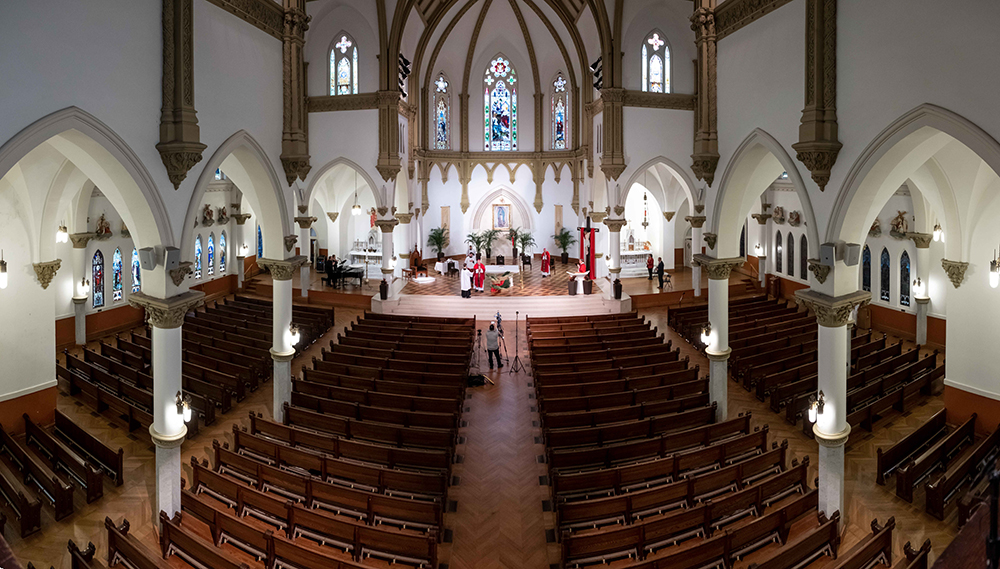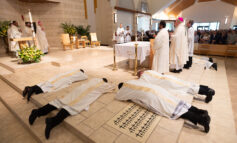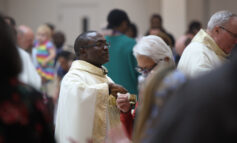
Bishop Edward J. Burns speaks during the recording of a Sunday Mass for Palm Sunday at the Cathedral Shrine of the Virgin of Guadalupe in Dallas on Saturday, April 4, 2020. The Mass was being celebrated without parishioners due to concerns over the spread of COVID-19. (KEVIN BARTRAM/Special Contributor)
By Father Timothy Gollob
Special to The Texas Catholic
Unfortunately the number 20/20 is indicative that one’s vision is very, very good. Well I hope that all of us have a correct understanding of Holy Week during this year of COVID-19. When we look back on our memories, they are going to be unique.
In the past I have participated in many different liturgies of Holy Week. Back in the days when I served on the altar at the Immaculate Conception Catholic Church in Tyler, we had a real Latin language style ceremony. Everything was in that tongue and good, modern Catholics were urged to procure a Roman Missal to follow the proceedings in their proper language.
We started the Triduum with a memorial Mass of the last supper of Jesus where he instituted the rite of the Holy Eucharist. The big thing was the altar of repose. Each parish tried to make that a site filled with flowers galore. Since that space was on the side altar, all could take a few minutes to meditate and pray.
Good Friday was also a bit different. There was a rite called the Mass of the Pre-sanctified. The consecration of the bread took place on the day before. No body excepting the priest celebrant could receive the Holy Communion. The rest of the parish were content to listen to the long reading or singing of the Passion and continue their Lenten fast.
In some of the cathedrals their was a solemn Vespers called Tenebrae. As seminarians in San Antonio, the students at St. John’s seminary were asked to sing the psalms. As the psalms were finished, one candle on a seven branch candlestick was extinguished. As the darkness enveloped the sanctuary after the final one was put out, the seminarians closed their Liber Usualis (song book) with a loud crash. The darkness and despair of Christ’s tomb was thus symbolized.
Lent did not officially end until noon of Holy Saturday. Until that time all had to observe the penances they had chosen. That day’s liturgy started at 7 a.m. with only 20 or so faithful in the pews. The celebrant and servers were outside the closed main door. The staff of the processional cross was used to knock three times on the door. After the third time, the doors were opened. This was a symbol of the public sinners of the early church for whom the penances of Lent were originally designed.They were being welcome back into the fold..
After many, many readings (in Latin) one found the church with a respectable amount of worshippers. These received Holy Eucharist blessed with new elements.. They were free to go to their homes and children to color real eggs with beautiful hues and symbols to represent the tomb of Christ from which he rose to new life.
Nothing is more beautiful than new freedom after a 40 day quarantine.
Father Timothy Gollob is the pastor of Holy Cross Catholic Church in Oak Cliff.



